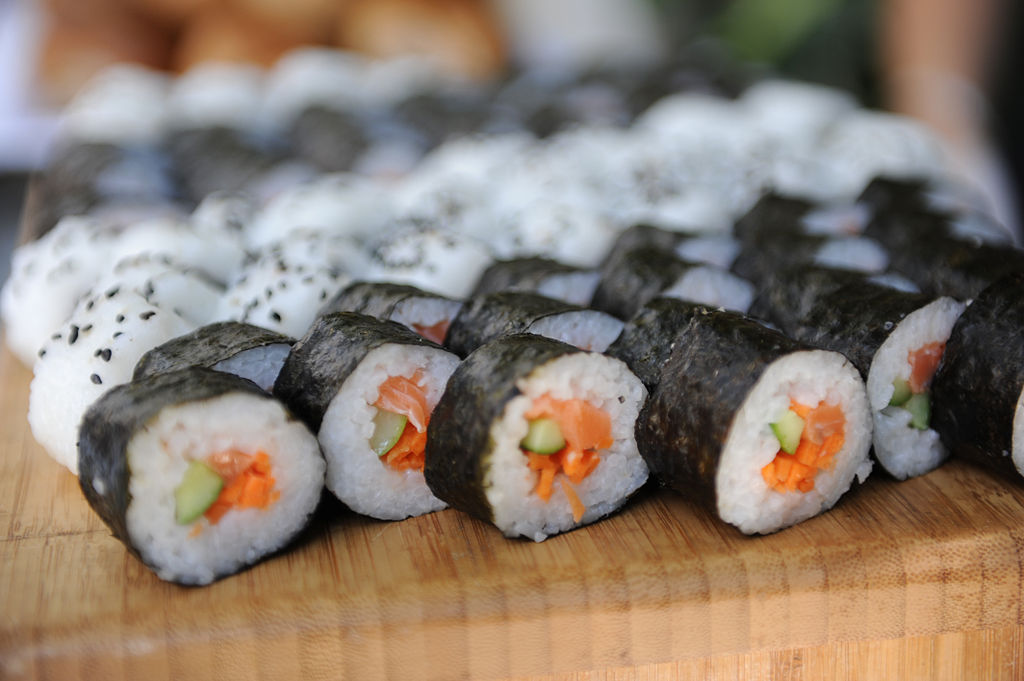Everyday Foods That Are Commonly Faked And Mislabeled

Meet the food playing the food, disguised as another food.
If you’ve ever been skeptical about brands being a bit deceitful in the food they sell you, there’s good reason for it, as there’s a little something called “food fraud,” and it happens in the most unusual of instances.
Dr. Rosalee Hellberg, a food fraud expert, spoke in depth about mislabeled products on The Foodbeast Katchup Podcast, rattling off food after food that you’ve probably had in your kitchen cabinet.
Dr. Hellberg and her team at Chapman University have dedicated their lives to researching fraudulent food, identifying the specific genes within different foods, and ultimately discovering sketchy practices within the industry.
While some companies have been publicly exposed and corrected the course, food fraud is easy to repeat, and has been a problem for hundreds of years.
Here are the foods, and some fraudulent examples that will leave you walking around the grocery store with constant doubt.
__________
Pepper

“Pepper is really interesting ’cause it has a really long history of fraud,” Dr. Hellberg said. “Even dating back to Roman times, there are instances of… fraudulent pepper being sold.”
While you’d think pepper would get its act together over the last 600 years, fraudulent practices still occur today. From adding dirt, to dried juniper berries, pepper manufacturers still try to get that weight up on the cheap. If you ever feel your lemon-pepper shrimp tastes like dirt, now you know why.
__________
Honey

Honey is the third most faked food in the world, according to New York Times best selling book, Real Food, Fake Food.
Dr. Hellberg said that with honey, a lot of times, sugars will be mixed in, so you’re not actually getting the 100 percent honey that’s put on the label.
If you’re in the loop with bees being wiped out at a rapid pace, this one may or may not be that surprising to you.
__________
Wine

“With wine there’s a lot of possibilities for fraud,” Dr. Hellberg said. “Some of the most common are mixing finished wines. You take one type of wine, another type of wine and mix them together.”
This one’s crazy because unless you’re a professional wine taster, how can you even tell they’re being mixed? Dr. Hellberg suggested the best we can do to avoid this, is to get to know the source, find their ethos, and go with wineries with good reputations. You can even ask if they’re actually doing anything to prevent wine fraud. While this form of fraud won’t hurt you, it might hurt your wallet if you’re paying for a premium wine and not actually getting it.
__________
Chocolate

“With chocolate, one of the main things I found was counterfeit chocolate,” Hellberg said. “People are taking substandard chocolate and putting it under a fake label of a chocolate brand that’s well recognized.”
One widely publicized occurrence of this type of mixing came from the Mast Brothers’ chocolate, which was accused of using melted chocolate from Valrhona chocolates, and selling them for $10 a pop. This type of chocolate fraud is common globally, according to Hellberg.
__________
Olives

“…In Italy, fraudsters were taking olives, and typically the substandard olives that are discolored, they were soaking them in a copper sulfate solution, which gives them a nice bright green color. Hellberg said. “They’re called, ‘Painted Olives.’ If you’re eating copper, you’re going to have some health problems.”
This happened in 2016, and Italian police seized 85,000 tons of those green olives. Believe it or not, this type of olive fraud is pretty common, so keep a close eye on your olives.
__________
Olive Oil

Like a few other things on this list, olive oils have been found to be mixed with lower quality olive oils. In 2016, it was reported that 80 percent of the Italian olive oil sold in markets is fraudulent.
“If you see something that’s out of wack, that doesn’t look right on the label, or the price doesn’t match, that’s usually a good indicator that it might be a fraudulent product,” Dr. Hellberg said.
While a lot of Italian olive oils are mislabeled, our own resident food scientist Constantine Spyrou argues that getting Spanish olive oils that are labeled “Italian” isn’t really a downgrade.
__________
Sushi

One of the most common forms of sushi fraud comes from the ol’ red snapper. It seems that every time researchers dig into the fish, regardless of year, or location, the fish has been faked.
It’s so bad, that you’ve probably never truly tasted real red snapper.
“Most of the time studies have found it’s not red snapper,” Dr. Hellberg said. “We actually just completed a study in my lab… and again, ‘red snapper’ was not red snapper.”
We can even take it one step further, as in 2017, a study showed that almost half the sushi in Los Angeles is mislabeled. From halibut to flounder, there’s a good chance Angelenos are not actually getting the sushi they ordered.






















